Empire Wall
Defensive Strategy
Monday, April 10, 2017
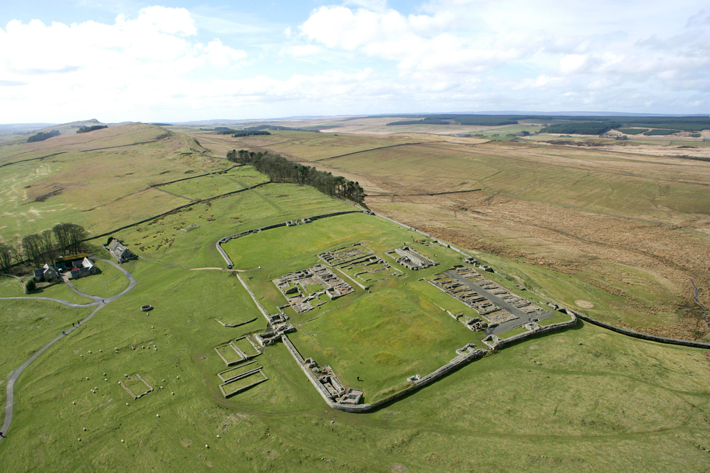
Although not its only purpose, Hadrian’s Wall was a major component of the empire’s frontier military strategy. “Undoubtedly the wall must have been used to define and regulate points where people from north of the wall could come to trade and have contact with the empire,” says Nick Hodgson, principal archaeologist of the Tyne & Wear Archives & Museums. “But I see its primary purpose as a physical barrier to slow up the crossing of raiders and people intent on getting into the empire for destructive or plundering purposes.” To this end, the entire length of the wall was built with an alternating series of forts, most for both cavalry and infantry, each housing as many as 600 men, manned milecastles for between 12 and 20 men, and lookout towers. “It’s important to be clear that the wall isn’t the sort of defensive line where the whole of the Roman army would have stood together to repel some kind of siege like a medieval fortress,” says Hodgson, “but rather that it would allow the instant observation and slowing down of an attack or movement towards the province, and give time to bring extra troops from the nearest milecastle or fort, or even from other locations. It’s not a place where you make a final stand.”
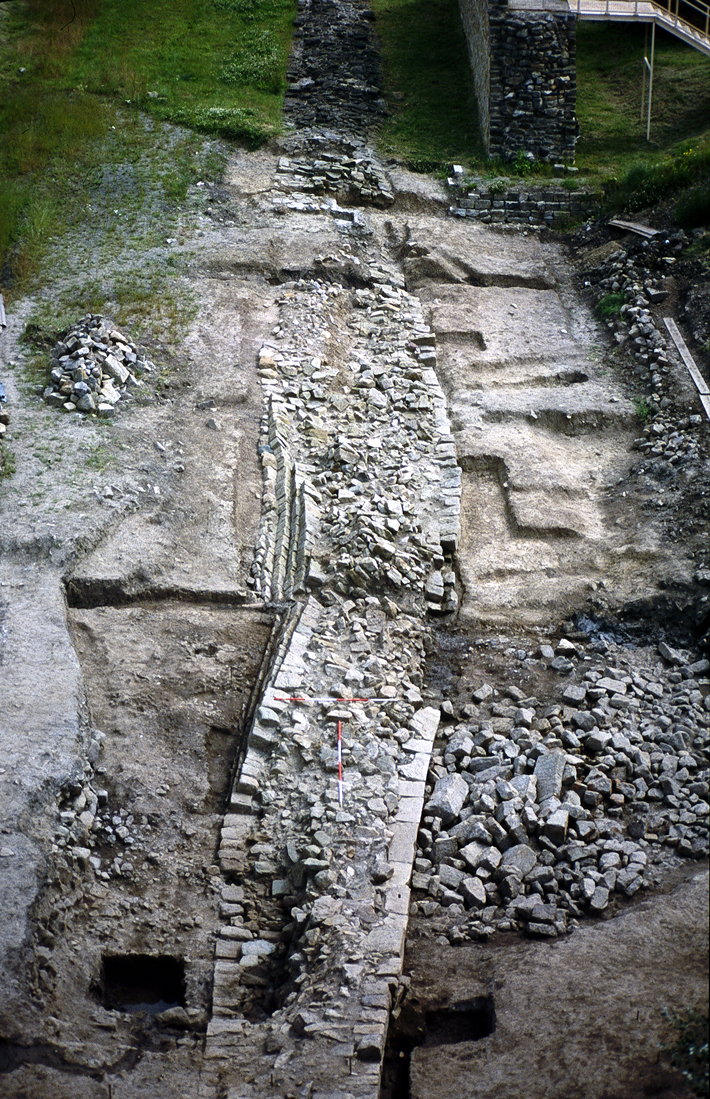 But the forts and milecastles, and even the wall itself, were only part of what Hodgson describes as a multilevel system of defense that also included outpost forts as far as 70 miles north of the wall, as well as a network of forts south of the wall housing major military installations. During excavations of the fort and wall at Wallsend, whose Roman name may have been Segedunum, Hodgson’s team uncovered a particularly interesting feature of this system—rows of holes in the ground between the wall and the defensive ditch. At first the team believed that the pits, which likely held branches or small tree trunks entangled with sharpened branches to form a nearly impenetrable obstacle, were a local feature designed to give extra protection to the town outside the fort. But a few years later, more of these pits were found farther west along the wall, and it is now thought that they are a general feature of Hadrian’s Wall, at least along the first 12 miles of the eastern section where the terrain is quite flat. Says Hodgson, “This new part of the wall’s anatomy has been a fascinating discovery because this extra, very sharp-looking set of obstacles immediately in front of the wall has reignited the discussion of the purpose of the wall and demanded a reconsideration of the long-held interpretation that it had no defensive or tactical role.”
But the forts and milecastles, and even the wall itself, were only part of what Hodgson describes as a multilevel system of defense that also included outpost forts as far as 70 miles north of the wall, as well as a network of forts south of the wall housing major military installations. During excavations of the fort and wall at Wallsend, whose Roman name may have been Segedunum, Hodgson’s team uncovered a particularly interesting feature of this system—rows of holes in the ground between the wall and the defensive ditch. At first the team believed that the pits, which likely held branches or small tree trunks entangled with sharpened branches to form a nearly impenetrable obstacle, were a local feature designed to give extra protection to the town outside the fort. But a few years later, more of these pits were found farther west along the wall, and it is now thought that they are a general feature of Hadrian’s Wall, at least along the first 12 miles of the eastern section where the terrain is quite flat. Says Hodgson, “This new part of the wall’s anatomy has been a fascinating discovery because this extra, very sharp-looking set of obstacles immediately in front of the wall has reignited the discussion of the purpose of the wall and demanded a reconsideration of the long-held interpretation that it had no defensive or tactical role.”
Where Were the Stables?
Monday, April 10, 2017
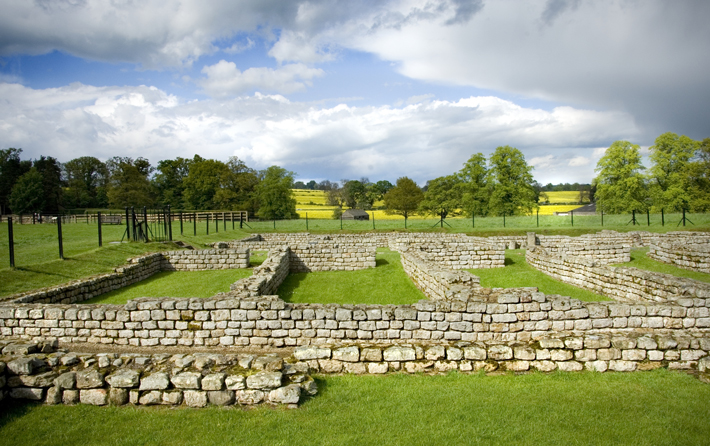
Although infantry was the lifeblood of the Roman army, cavalry provided a crucial element of the Roman military system across the empire. During excavations of the barracks at Segedunum on Hadrian’s Wall, the mystery of where the horses were kept was solved. “We had never been able to identify stables in Roman forts because we were always thinking of separate stables and soldiers’ barracks,” says Segedunum archaeologist Nick Hodgson. “But since we were able to recognize the long, deep pits for the horses’ waste under the barracks’ floors, it’s universally recognized that the horses and men were accommodated together—three horses and three troopers to a room.” This allowed the men to keep a close eye on their very valuable roommates.
Feeding the Army
Monday, April 10, 2017
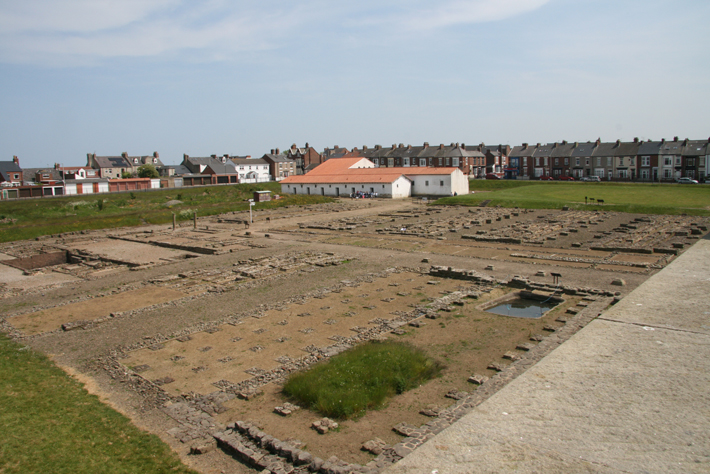
In the Roman period, the fort at South Shields, which overlooks the entrance to the River Tyne, guarded port access to Hadrian’s Wall. Several forts were built at the site, first under the emperor Hadrian, and then under Marcus Aurelius, but in the first decades of the third century A.D., the fort’s southern wall was removed and the fort’s main function as the guardian of the harbor changed. With the addition of 13 granaries to the original two that were standard—with a further six constructed later—South Shields, whose Latin name may be Arbeia, became the main supply base for the whole of Hadrian’s Wall.
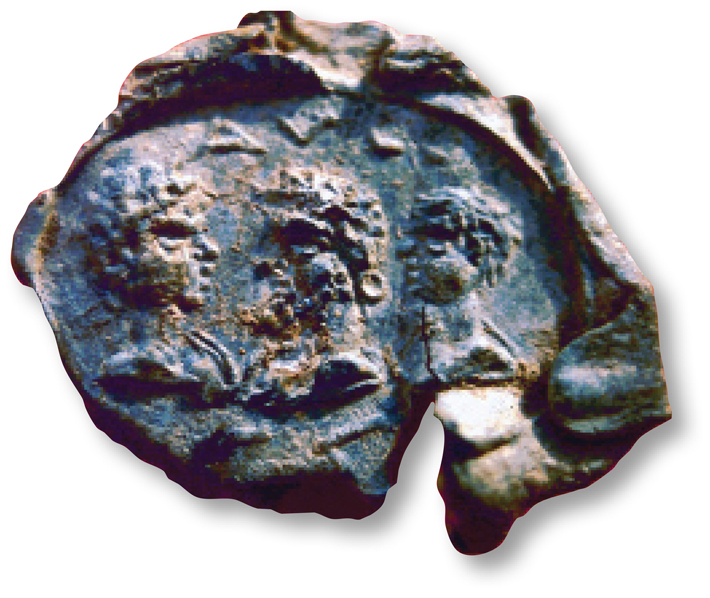 Scholars believe that this repurposing of the fort was tied to the emperor Septimius Severus’ invasion of Scotland and his plan for Rome to attempt, once again, to occupy the entirety of northern Britain. As part of this effort, Severus ordered that Hadrian’s Wall be rebuilt where needed, which likely was the reason that the wall was originally identified as the “Severan Wall.” Septimius Severus’ campaign would, in the end, prove unsuccessful and be abandoned by his son Caracalla. Though originally intended to supply the tens of thousands of troops Septimius Severus brought with him for the invasion, for a century after the effort failed, Arbeia nevertheless remained a main supply base for soldiers on the wall. “This has really important implications for understanding how the Roman army provisioned itself and about its relationships with local people,” says archaeologist Nick Hodgson. “The default modern assumption has been that Hadrian’s Wall’s army got its foodstuffs from the local population, whether by taxation, requisition, or purchase. But Arbeia casts doubt on this because it suggests a continuing reliance on imported materials, perhaps from southern Britain, or even from the continent. It’s a more complicated method of supplying the army than the rather more cozy model of getting it all from local farmers.”
Scholars believe that this repurposing of the fort was tied to the emperor Septimius Severus’ invasion of Scotland and his plan for Rome to attempt, once again, to occupy the entirety of northern Britain. As part of this effort, Severus ordered that Hadrian’s Wall be rebuilt where needed, which likely was the reason that the wall was originally identified as the “Severan Wall.” Septimius Severus’ campaign would, in the end, prove unsuccessful and be abandoned by his son Caracalla. Though originally intended to supply the tens of thousands of troops Septimius Severus brought with him for the invasion, for a century after the effort failed, Arbeia nevertheless remained a main supply base for soldiers on the wall. “This has really important implications for understanding how the Roman army provisioned itself and about its relationships with local people,” says archaeologist Nick Hodgson. “The default modern assumption has been that Hadrian’s Wall’s army got its foodstuffs from the local population, whether by taxation, requisition, or purchase. But Arbeia casts doubt on this because it suggests a continuing reliance on imported materials, perhaps from southern Britain, or even from the continent. It’s a more complicated method of supplying the army than the rather more cozy model of getting it all from local farmers.”
The Other Wall
Monday, April 10, 2017
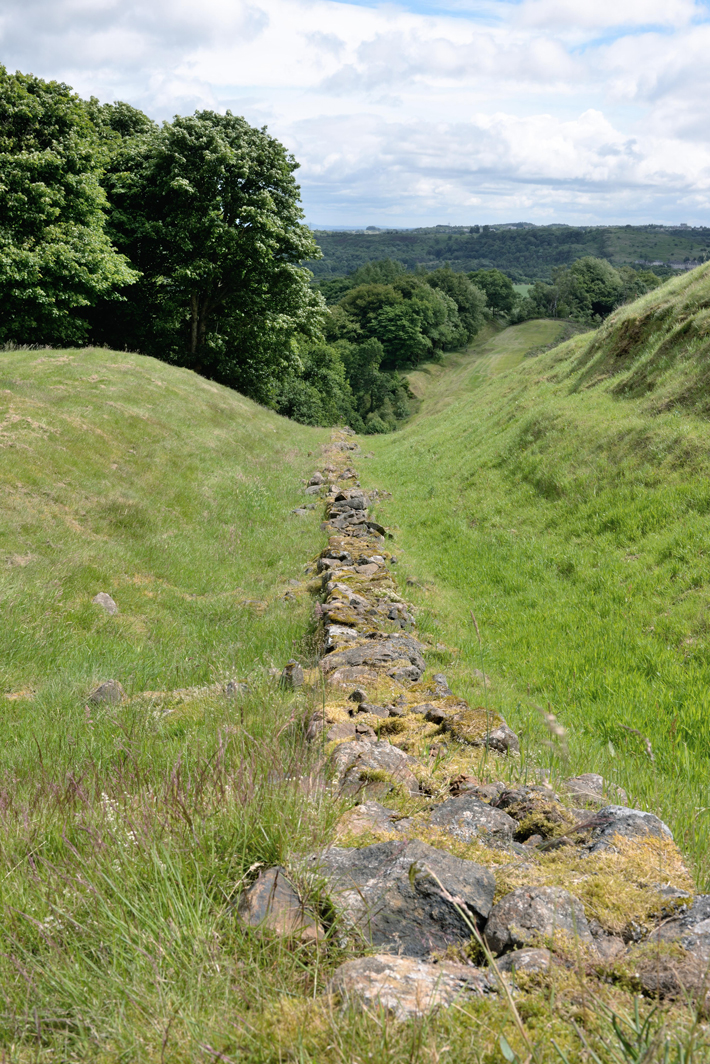 For 23 years, between A.D. 142 and 165, Hadrian’s Wall actually wasn’t the Roman Empire’s northern frontier. After Hadrian’s death, his successor, Antoninus Pius, reinvaded Scotland. Like Hadrian, Antoninus Pius did not have military triumphs to call upon to gain prestige, but unlike his predecessor, he turned to territorial expansion. He then built his own wall 100 miles north of Hadrian’s, between the Firth of Forth and the Firth of Clyde. The 37-mile-long “Antonine Wall,” was made mostly of turf on a stone foundation, was 10 feet tall, 16 feet wide, and had 17 forts and additional fortlets. As many as 7,000 soldiers were stationed along the Antonine Wall, but this far northern frontier proved difficult to defend and troops may have been needed to face more pressing needs on the continent. Soon after Antoninus Pius died, the new emperor, Marcus Aurelius, moved the frontier back to Hadrian’s Wall, where it remained until the end of Roman rule in Britain nearly 250 years later.
For 23 years, between A.D. 142 and 165, Hadrian’s Wall actually wasn’t the Roman Empire’s northern frontier. After Hadrian’s death, his successor, Antoninus Pius, reinvaded Scotland. Like Hadrian, Antoninus Pius did not have military triumphs to call upon to gain prestige, but unlike his predecessor, he turned to territorial expansion. He then built his own wall 100 miles north of Hadrian’s, between the Firth of Forth and the Firth of Clyde. The 37-mile-long “Antonine Wall,” was made mostly of turf on a stone foundation, was 10 feet tall, 16 feet wide, and had 17 forts and additional fortlets. As many as 7,000 soldiers were stationed along the Antonine Wall, but this far northern frontier proved difficult to defend and troops may have been needed to face more pressing needs on the continent. Soon after Antoninus Pius died, the new emperor, Marcus Aurelius, moved the frontier back to Hadrian’s Wall, where it remained until the end of Roman rule in Britain nearly 250 years later.
Life on the Frontier
Monday, April 10, 2017
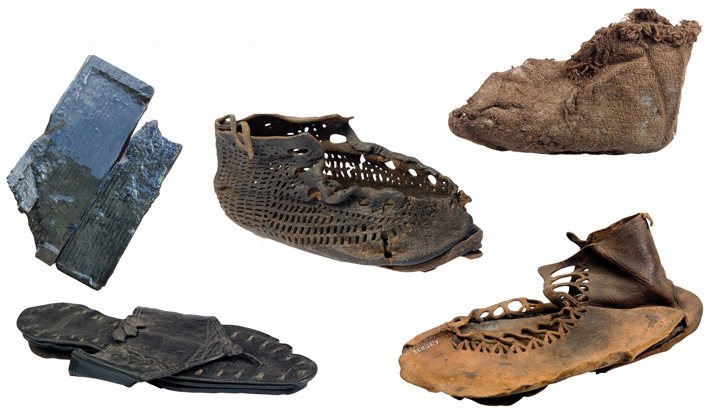
The first Roman settlement at the site of Vindolanda was built between A.D. 74 and 85 just a mile south of where Hadrian’s Wall would be constructed decades later. Vindolanda would remain vital to the frontier system over the next three centuries, during which a total of nine forts would be constructed, and hundreds of thousands of soldiers, men, women, and children passed through the fort and extramural town, or vicus, associated with it. Since 1929, when the first modern excavations of Vindolanda began, the site has provided archaeologists with the best evidence of how these varied inhabitants of the frontier lived.
What makes Vindolanda exceptional among frontier sites is the access it provides to information about daily life, thanks to an extraordinary level of preservation and decades of careful excavation, explains archaeologist Andrew Birley. “The biggest thing we can do here is to connect where people lived with their discard sites,” he says. This allows archaeologists to track individuals around the site, see how they used certain spaces, and map out all the artifacts associated with them. Birley says, “We have a context for everything, which is key. All the artifacts are surrounded by a supporting cast of materials. For example, if you are looking at the commander’s house, you don’t just have the house, but also the whole family’s shoes.” In fact, more than 6,500 discarded shoes have been found at Vindolanda—though there are only two complete pairs. “Roman leather is like plastic. They use it until they can’t fix it anymore, and then do everything they can to get rid of it. But in these anaerobic conditions, it survives for millennia,” says Birley. “The shoes allow us to do some very cool things, such as deconstruct the myth that the Roman army was an entirely male world. Just like the modern army, the fighting soldier is actually in the minority. When we find a child’s shoe, for example, it’s another nail in the coffin of the male preserve.”
But the most distinctive artifacts to have been discovered at Vindolanda are the more than 2,000 writing tablets—written in ink on wood or, much less commonly, scratched with a stylus into sheets of wax on wooden backings—that tell the story of the site, and indeed of the Roman army in Britain, in a remarkable way. The tablets contain records of business transactions, one of which mentions the “awful” state of the Roman roads, personal letters home asking for socks, shoes, and underwear, and an invitation to the commander’s wife to attend a birthday party, which is thought to be the earliest example of a woman’s hand in Britain. “It’s no longer enough to say you have a Roman fort with a Roman army because then all you are doing is painting everyone with the same big brush and smearing everyone with the same paint,” says Birley. “We want to see the characters, the individuals, and the communities, because this is what makes up the full, richer picture.”
Advertisement
Advertisement
IN THIS ISSUE
Advertisement

Recent Issues
-
 May/June 2024
May/June 2024
-
 March/April 2024
March/April 2024
-
 January/February 2024
January/February 2024
-
 November/December 2023
November/December 2023
-
 September/October 2023
September/October 2023
-
 July/August 2023
July/August 2023
-
 May/June 2023
May/June 2023
-
 March/April 2023
March/April 2023
-
 January/February 2023
January/February 2023
-
 November/December 2022
November/December 2022
-
 September/October 2022
September/October 2022
-
 July/August 2022
July/August 2022
-
 May/June 2022
May/June 2022
-
 March/April 2022
March/April 2022
-
 January/February 2022
January/February 2022
-
 November/December 2021
November/December 2021
-
 September/October 2021
September/October 2021
-
 July/August 2021
July/August 2021
-
 May/June 2021
May/June 2021
-
 March/April 2021
March/April 2021
-
 January/February 2021
January/February 2021
-
 November/December 2020
November/December 2020
-
 September/October 2020
September/October 2020
-
 July/August 2020
July/August 2020
-
 May/June 2020
May/June 2020
-
 March/April 2020
March/April 2020
-
 January/February 2020
January/February 2020
-
 November/December 2019
November/December 2019
-
 September/October 2019
September/October 2019
-
 July/August 2019
July/August 2019
-
 May/June 2019
May/June 2019
-
 March/April 2019
March/April 2019
-
 January/February 2019
January/February 2019
-
 November/December 2018
November/December 2018
-
 September/October 2018
September/October 2018
-
 July/August 2018
July/August 2018
-
 May/June 2018
May/June 2018
-
 March/April 2018
March/April 2018
-
 January/February 2018
January/February 2018
-
 November/December 2017
November/December 2017
-
 September/October 2017
September/October 2017
-
 July/August 2017
July/August 2017
-
 May/June 2017
May/June 2017
-
 March/April 2017
March/April 2017
-
 January/February 2017
January/February 2017
-
 November/December 2016
November/December 2016
-
 September/October 2016
September/October 2016
-
 July/August 2016
July/August 2016
-
 May/June 2016
May/June 2016
-
 March/April 2016
March/April 2016
-
 January/February 2016
January/February 2016
-
 November/December 2015
November/December 2015
-
 September/October 2015
September/October 2015
-
 July/August 2015
July/August 2015
-
 May/June 2015
May/June 2015
-
 March/April 2015
March/April 2015
-
 January/February 2015
January/February 2015
-
 November/December 2014
November/December 2014
-
 September/October 2014
September/October 2014
-
 July/August 2014
July/August 2014
-
 May/June 2014
May/June 2014
-
 March/April 2014
March/April 2014
-
 January/February 2014
January/February 2014
-
 November/December 2013
November/December 2013
-
 September/October 2013
September/October 2013
-
 July/August 2013
July/August 2013
-
 May/June 2013
May/June 2013
-
 March/April 2013
March/April 2013
-
 January/February 2013
January/February 2013
-
 November/December 2012
November/December 2012
-
 September/October 2012
September/October 2012
-
 July/August 2012
July/August 2012
-
 May/June 2012
May/June 2012
-
 March/April 2012
March/April 2012
-
 January/February 2012
January/February 2012
-
 November/December 2011
November/December 2011
-
 September/October 2011
September/October 2011
-
 July/August 2011
July/August 2011
-
 May/June 2011
May/June 2011
-
 March/April 2011
March/April 2011
-
 January/February 2011
January/February 2011
Advertisement






